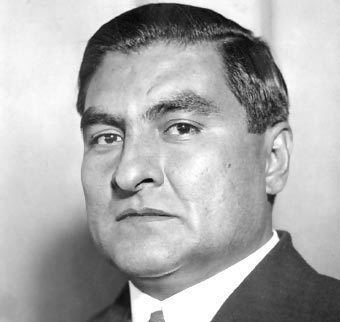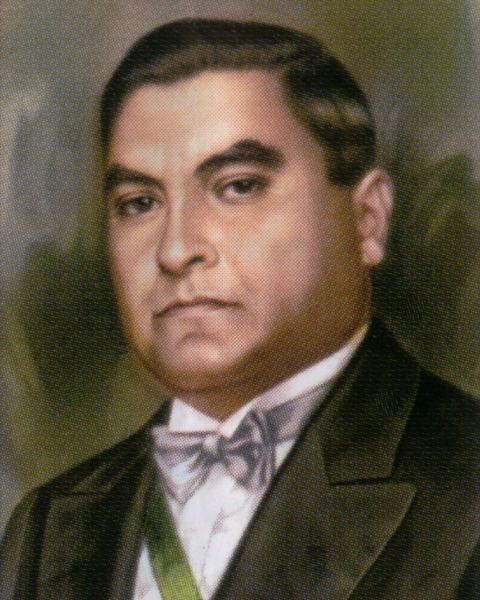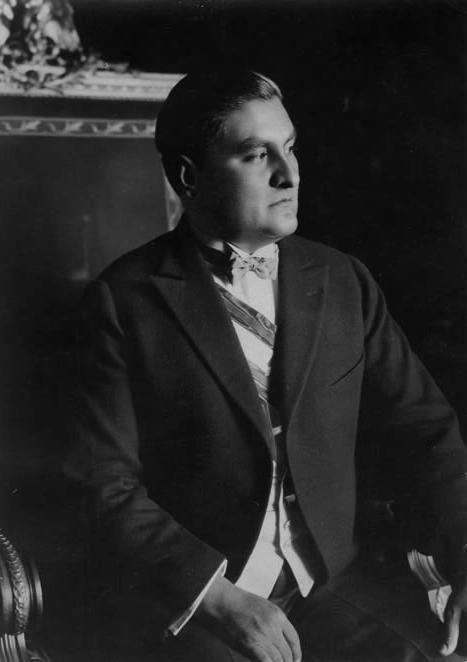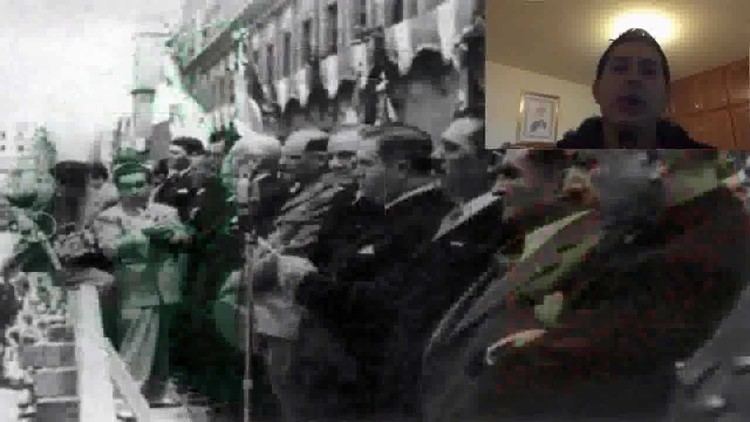Role Political figure | Name Emilio Gil Nationality Mexican | |
 | ||
Spouse(s) Carmen Garcia (1905-1979) Party Institutional Revolutionary Party Books The Conflict Between the Civil Power and the Clergy: Historical and Legal Essay Similar People Pascual Ortiz Rubio, Plutarco Elias Calles, Abelardo L Rodriguez, Alvaro Obregon, Adolfo de la Huerta | ||
Preceded by Plutarco Elias Calles Education Escuela Libre de Derecho | ||
Gobierno de emilio portes gil
Emilio Cándido Portes Gil ([eˈmiljo ˈportes xil]; 3 October 1890 – 10 December 1978) was President of Mexico from 1928 to 1930. He served following the assassination of president-elect General Álvaro Obregón, who had been president 1920-1924. Since the Mexican Constitution of 1917 forbade re-election of a serving president, the out-going president Plutarco Elías Calles could not formally become president. Portes Gil became president, but Calles, the "Jefe Máximo", retained effective political power during what is known as the Maximato.
Contents
- Gobierno de emilio portes gil
- Xicotencatl tamaulipas presa emilio portes gil
- Early life and education
- Early career
- Presidency
- Later years
- References

Xicotencatl tamaulipas presa emilio portes gil
Early life and education

Portes Gil was born in Ciudad Victoria, the capital of the state of Tamaulipas in northeast Mexico. Although his grandfather had been a prominent politician in Tamaulipas, Portes Gil's father died when Emilio was young and he and his widowed mother lived in straitened circumstances. Portes Gil received certification as a school teacher, with the aid of a state grant. He sought to study law.
Early career

He was in law school during the outbreak of the Mexican Revolution and in late 1914 he allied himself with "First Chief" Venustiano Carranza, head of the Constitutionalist faction, who would assume the presidency of the country the following May. When he graduated from law school in 1915, he had already begun his career in the public administration with a posting in the Constitutionalist faction's Department of Military Justice.

For Portes Gil, he became part of the Sonoran generals of the Constitutionalist Army, particularly Álvaro Obregón, who had defeated Pancho Villa's forces and eliminated them as a political or military factor in Mexico after 1915, and Plutarco Elías Calles. Portes Gil demonstrated skills as a lawyer and administrator, which catapulted him into the presidency of Mexico when Obregón was assassinated in 1928.

Over the ensuing years, he continued to serve the government in both a legal capacity – supreme state court judge in Sonora; legal advisor to the Ministry of War – and in elective office: he was elected to Congress in 1917, 1921, and 1923, and he served as governor of his native Tamaulipas on two occasions (1920 and 1925).
Presidency

Between August 28 and November 30, 1928, he was Minister of the Interior (Gobernación) in the cabinet of Plutarco Elías Calles. When president-elect Álvaro Obregón was assassinated on July 17, 1928 by a religious fanatic, there had to be a political solution to the crisis that did not include Calles returning to the presidency. Portes Gil with the assent of Calles assumed office as provisional president for a period of 14 months when fresh elections were called. At this point, he also inherited a widespread and violent religious rebellion known as the Cristero War.
Faced with a university strike during his period in office, he managed to defuse the situation by convening a special session of Congress that ultimately enacted the legislation whereby the National University of Mexico was granted its autonomy.
He also attempted to negotiate the withdrawal of the United States troops from Nicaragua in exchange for the surrender of Nicaraguan General Augusto Sandino; when the talks failed, he granted Sandino political asylum in Mexico – and a parcel of land in Temixco.
Portes Gil attempted to steer government officials away from self-enrichment during their terms of office, wanting to have officeholders who "know how to be loyal to institutions, and like the country want the triumph of the Revolution."
His administration embarked on public works projects building schools, hospitals, and housing to benefit ordinary Mexicans. In Mexico City, a new hospital for tuberculosis patients was inaugurated; the physical plant of the National Preparatory School, housed in the colonial-era Colegio de San Ildefonso, was expanded; a major sports center open to all, built on a former city dump; and new police and fire stations built in Art Deco design.
Later years
He handed on the presidential sash to Pascual Ortiz on February 5, 1930, then served for 18 months as interior minister.
He subsequently traveled to Europe as Mexico's first representative to the League of Nations. Under later presidents, he served in various capacities, including ambassador to India, foreign minister, attorney-general, and president of the Partido Nacional Revolucionario – the National Revolutionary Party.
In 1934, Lázaro Cárdenas was Calles's hand-picked successor to the presidency; Calles attempted to retain his own power as he had throughout the Maximato. Cárdenas out-maneuvered Calles politically, eventually exiling him from Mexico. Cárdenas put Portes Gil in charge of purging the party of Callista elements. Since Portes Gil was "one of the 'puppet presidents' so unceremoniously dumped by Calles, [Portes Gil] was happy to serve."
Cárdenas reorganized the party as the Partido de la Revolución Mexicana (PRM), setting the structural form of sectoral representation that its 1946 successor, the Institutional Revolutionary Party (PRI) retains. Cárdenas, however, returned Portes Gil to his stronghold in Tamaulipas, once the former president had performed his task, since Portes Gil "attempted to build up his own position for a possible political comeback."
He retired from politics in 1936. He died in Mexico City on December 10, 1978, at the age of 88 years.
